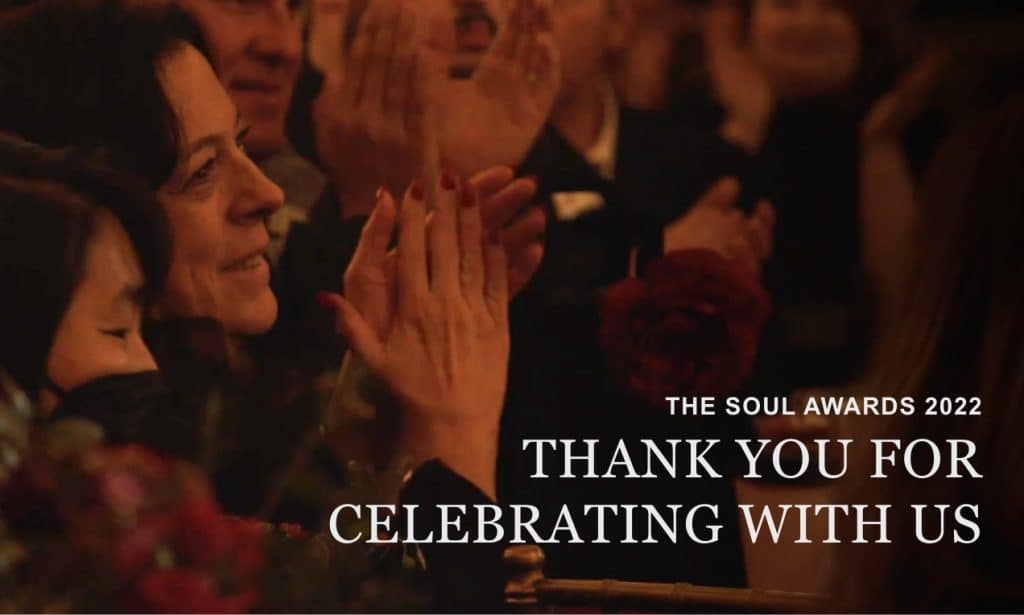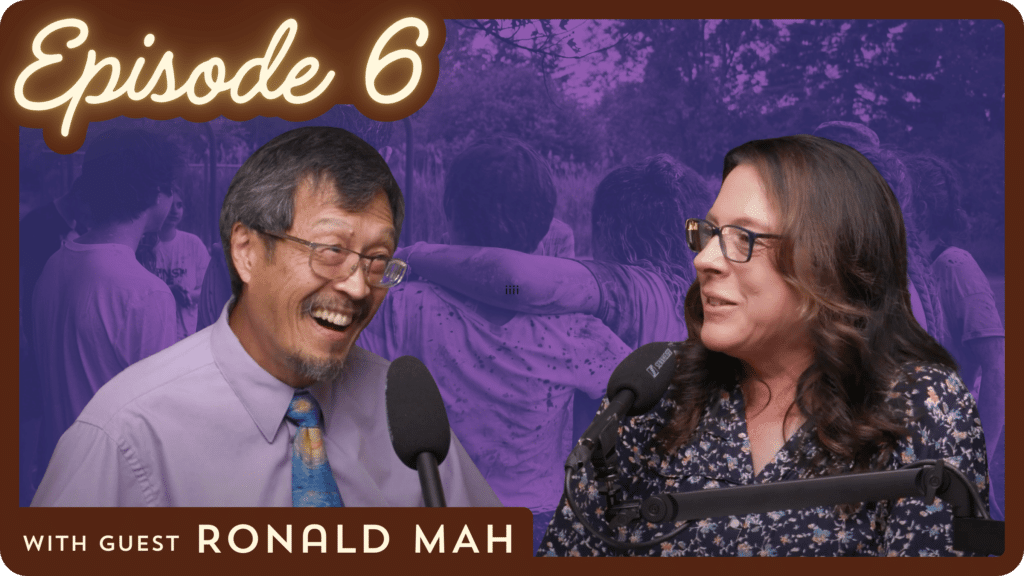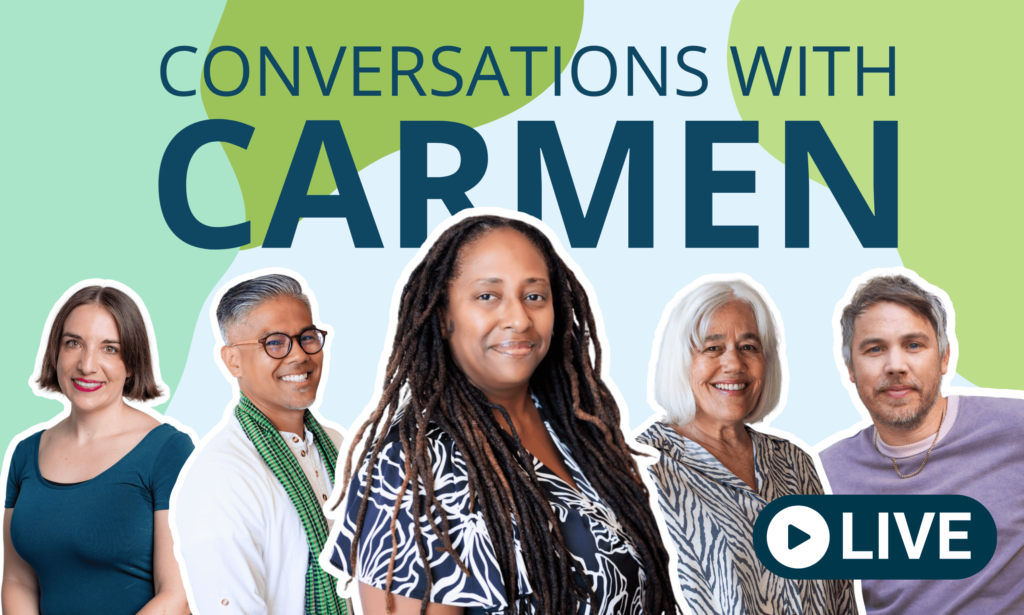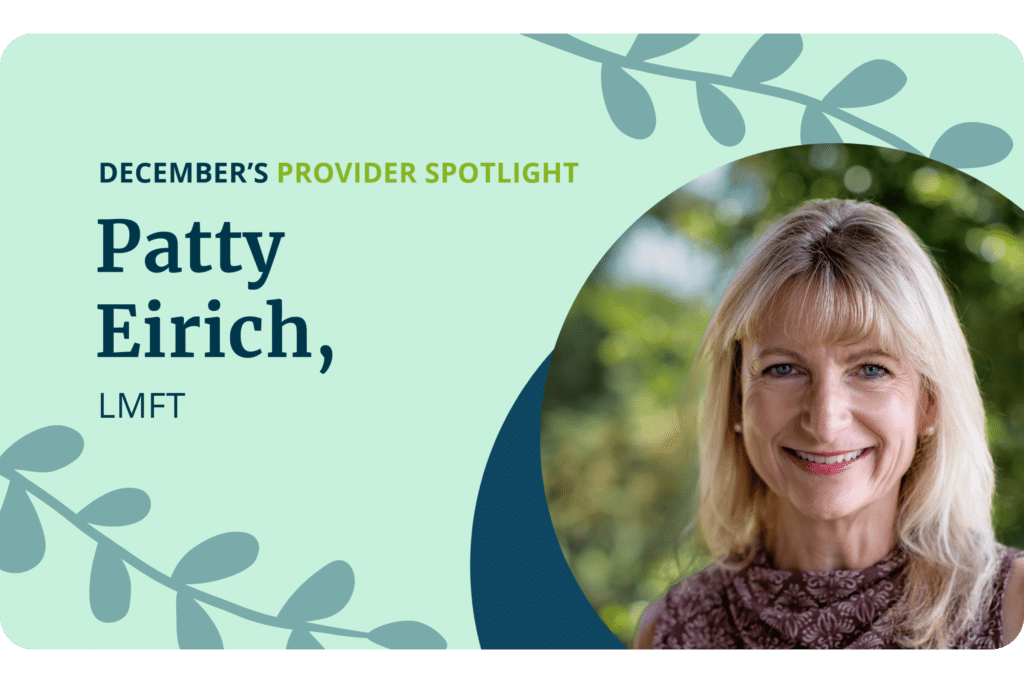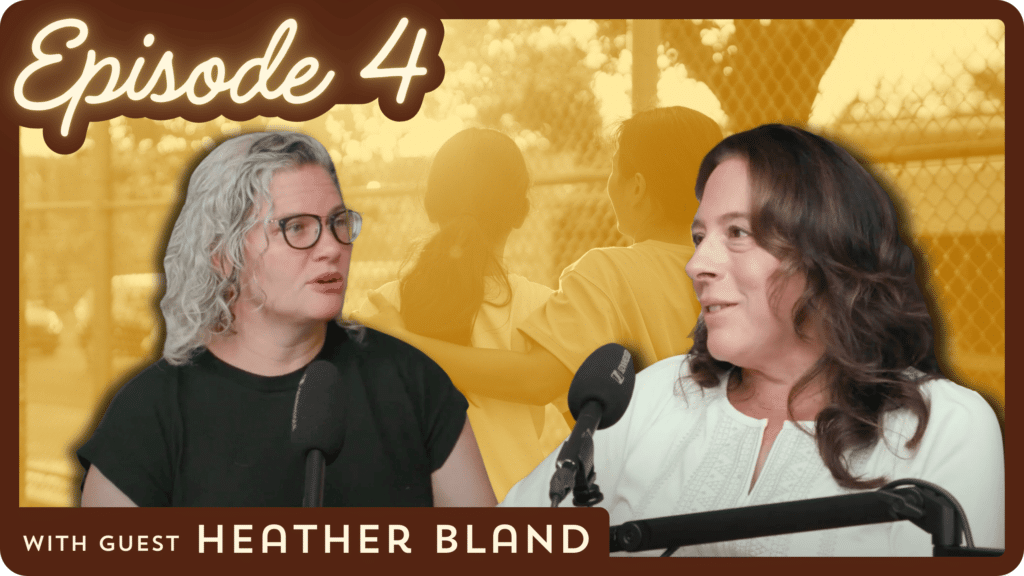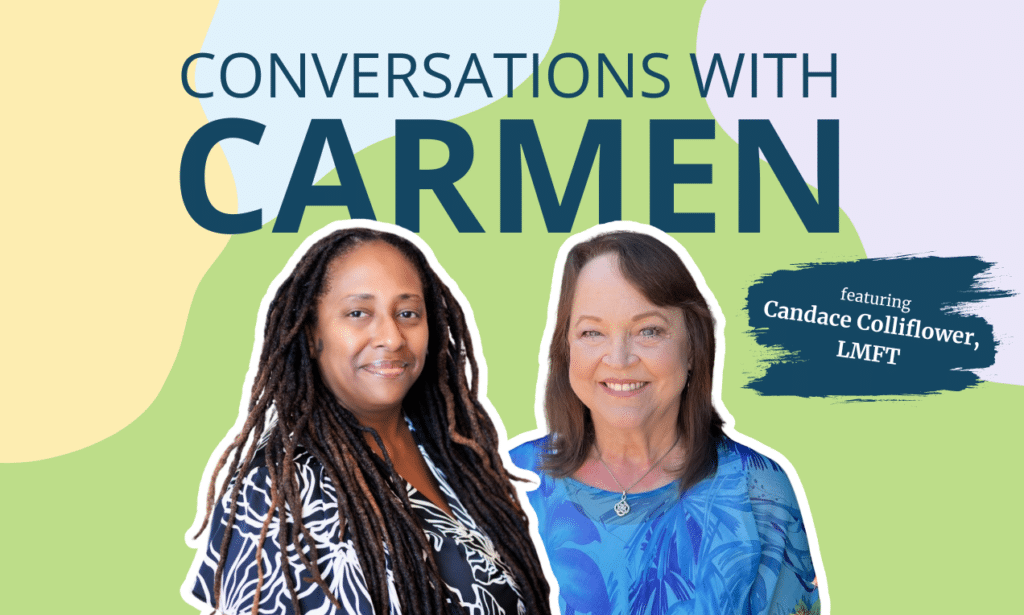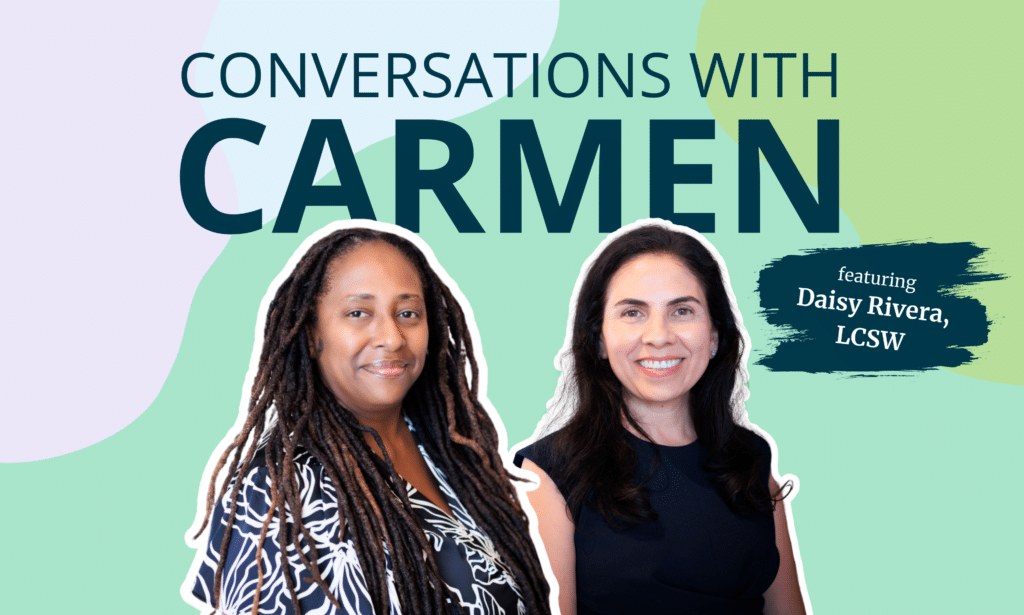
Every month we highlight a provider as our Provider Spotlight. This month’s Provider Spotlight was Lauren Pena, LMFT. Each Provider Spotlight is interviewed by Dr. Carmen Majied for a segment called Conversations with Carmen.
In this segment, Carmen and Lauren discuss Lauren’s journey through life and how she arrived at Private Practice.
You shared that you are originally from northern Virginia (close in proximity to Washington, D.C.). What are some of your most notable takeaways from growing up on the east coast?
Yes, growing up in Northern Virginia did offer proximity to Washington, D.C. Looking back, I treasure the extraordinary experiences that this proximity offered, such as academic field trips to the Smithsonian museums, attendance at inaugurations, and rowing crew on the Potomac River. I equally hold dear the beauty of Virginia’s landscape.
You also shared that you had a “great childhood”. Are you willing to share a few things about your upbringing that contributed to it being so enjoyable?
Yes, I am so fortunate to have incredibly loving parents. They modeled love, respect, discipline, care, selflessness, and integrity. I credit them for providing a safe and stable home that allowed me to feel able to explore the world through my lens.
You mentioned that you’ve always had an affinity for art (including teaching art in high school and previously participating in as many art related volunteer opportunities as you could). What would you say first drew you to art? What styles of art are you most drawn to?
My mom is an artist, and I was a part of her classes from an early age. Socializing did not come easy to me, especially as a child. Drawing helped me reflect and make sense of my own inner dialogue-often the one I wasn’t brave enough yet to voice.
I adore illustration, notably children’s book illustrations. Mary Blair, the concept artist for a lot of Disney movies and attractions is my favorite. Her use of color, whimsical style is sophisticated and playful.
After earning your undergraduate degree in Studio Art, what were your career plans at the time? Did you initially have an interest in pursuing a career as a children’s book illustrator?
I had been building up my resume throughout my undergrad years. I volunteered as a docent and as a student rep at a local Fredericksburg Gallery, I taught art classes to a homeschool community, I worked at the on-campus art gallery and I co-directed student thesis exhibitions. I had applied to work at museums, but nothing was immediately taking off. I developed the interest in pursuing a career as a children’s book illustrator during my undergrad, but I hadn’t yet decided on pursuing a master’s degree in it.
Subsequent to graduating with your bachelors degree, you worked in such arenas as Disney and the Catholic schools system. Can you share a little bit about your experience in each of these venues?
Yes, a dear friend and I attended the Disney College Program post-graduation. We lived and worked at Disney. We were ambitious to find an avenue into working in any creative part at Disney. We were aiming to be Imagineers. We worked at Pinocchio’s Village Haus-very different-but we did find ways to bring creativity into that environment.
After Disney I worked in a few Catholic Schools. I was raised Catholic and by a teacher, so there was a familiarity in that environment. Personally, I was drawn to the idea of being of service.
You shared that you earned a MFA (Masters in Fine Arts) in Children’s Book Illustration from the Academy of Art (San Francisco).
Did you enjoy the program? What did navigating the program reveal to you about yourself (interests? passions? areas of curiosity?)?
I did enjoy the program. I discovered that as much as I love making art, I need connection. Working as a freelance illustrator became less and less desirable. I love to collaborate, I love critiques, a solo career felt a bit daunting as I got closer to the end of my program. One of my elected internships was at a nonprofit called Intersection for the Arts. It was here I helped with community-based art programming. Not illustration, but I loved it!
In 2011, you encountered a period of time during which you struggled a bit with your professional trajectory. What can you share with us about that journey?
Post graduation, I was working three jobs. I worked at a bakery, an art retail shop, and as an art production assistant. I was applying for jobs related to my field and jobs I had lots of experience in. The job market was tough. I felt so ready to use my skill set in one job. During that time, I balanced caregiving for my grandfather with dementia, trying to provide respite to my parents, one weekend a month for about a year. Eventually caregiving brought me to LA.
You shared a touching previous experience with me concerning how you and your grandfather bonded around art making in 2012 (subsequent to the passing of your grandmother). What was special and unique about the time that you and your grandfather spent together?
I was looking for ways to connect with my grandfather beyond tv and light gardening. Adult coloring books were peaking at that time, and I had picked one up at a children’s book conference. I introduced watercolor to my grandfather. We spent an hour together. He painted. We talked. We engaged. From then on, about once a week I would draw with him. Eventually, I started blogging about it to connect with others and reflect on our experience. This helped me so much; caregiving can be so isolating. This art making experience led me to find art therapy.
In 2016, you earned your second Master’s degree in Art Therapy (with an additional emphasis on Marriage and Family Therapy).
What intrigued you about the dual focus areas?
Yes, at Dolores Mission School, I provided individual therapy onsite to the elementary school students. At the Housing Authority I saw children, teens, and adults individually. I developed and ran a group at the local elementary school and developed a teen group at the Housing Authority. I also created a drop-in art therapy group for adult women.
Based on your previous interest in providing art therapy in community settings, you worked in such settings as Dolores Mission School and The Housing Authority (Long Beach). What services did you have an opportunity to provide in each respective setting?
Yes, at Dolores Mission School, I provided individual therapy onsite to the elementary school students. At the Housing Authority I saw children, teens, and adults individually. I developed and ran a group at the local elementary school and developed a teen group at the Housing Authority. I also created a drop-in art therapy group for adult women.
I’m intrigued by the fact that you spent time providing art based therapy at the Hoopa Valley Reservation (Trinity-Klamath, CA.) as well as at Camp Suzanne (Central CA. Women’s Facility). What can you share about those amazing experiences?
Yes, a group from my cohort led by Dr. Jessica Bianchi collaborated with an elementary school on the Hoopa Valley Reservation. During the course of a week, we facilitated art activities onsite that were informed by art therapy. The inspiration for art making came from the river being a life source for the community. This culminated into a community installation piece that the entire school participated in.
Dr. Jessica Bianchi collaborated with Camp Suzanne to facilitate art activities between incarcerated mothers and their children over the course of a week. The activities were informed by art therapy (consideration for materials, setting, time, varying dynamics) and aimed to support connection in the time that the families did have together during that week.
You joined the Soultenders network in 2019 as an Associate (later becoming licensed). How did your working relationship with Soultenders evolve over time?
Yes, I started as an AMFT with Soultenders. Part of that meant seeing clients in a private practice setting and then also working on the admin support team to help clients get linked with services. Since then, I’ve seen Soultenders grow significantly in locations and clinicians in practice. I’ve seen them pivot quickly to meet the need for telehealth during the pandemic. Soultenders supported me into licensure and through three maternity leaves. These life changing transitions offered so many opportunities for clear communication that strengthened our working relationship.
How does Soultenders support your professional goals?
How do you differentiate between Independent Contractor versus Private Practice Owner?
My first and biggest professional goal was to get licensed. Soultenders provided supervision, clinical experience, and required training to make that happen.
Working as an art therapist in pediatric palliative care-I was an independent contractor. You are on your own. As a private practice owner, I wouldn’t do it without the support of Soultenders. Being able to focus on my clients and having admin support when I need it is invaluable. Being a part of the Soultenders Network allows me to build my practice the way I want it to be so that it can fit into my life.
What client populations do you see in your practice? Is there a population of interest that you have yet to treat or work with?
Currently I work with mostly adults. I still work with kids and teens, but scheduling does not allow me to do that as much as I used to while balancing my own family life. I would be interested in working with the elderly again at some point.
Do you currently integrate Art Therapy into your practice?
Absolutely! My approach is client centered. Art directives typically develop as a response to something that has come up during a session. No skillset or experience needed!
Are there other clinical specialty areas that you are trained and/or certified in?
I’m working on an intensive training for ASD. EMDR is at the top of my bucket list.
You recently shared a couple of fun facts with me… you’re a mom of (3) kiddos; you and your mom have been taking a weekly tap dancing class together since 2018! Can you briefly elaborate on each of these wonderful life areas?
Yes, I have a 4 y/o daughter, a 2 y/o son, and a 10-month-old daughter. They are my favorite people to hang out with.
Yes, my mom and I both tapped a bit as kids. I had dreamed about returning to it as an adult. Luck would have it a class was offered nearby. I convinced my mom to join, and we were welcomed with open arms into this incredible group of supportive women who happen to also love learning new tap routines. We perform a few times a year, but my joy is in the practicing and sense of community it offers. It is my self-care!

